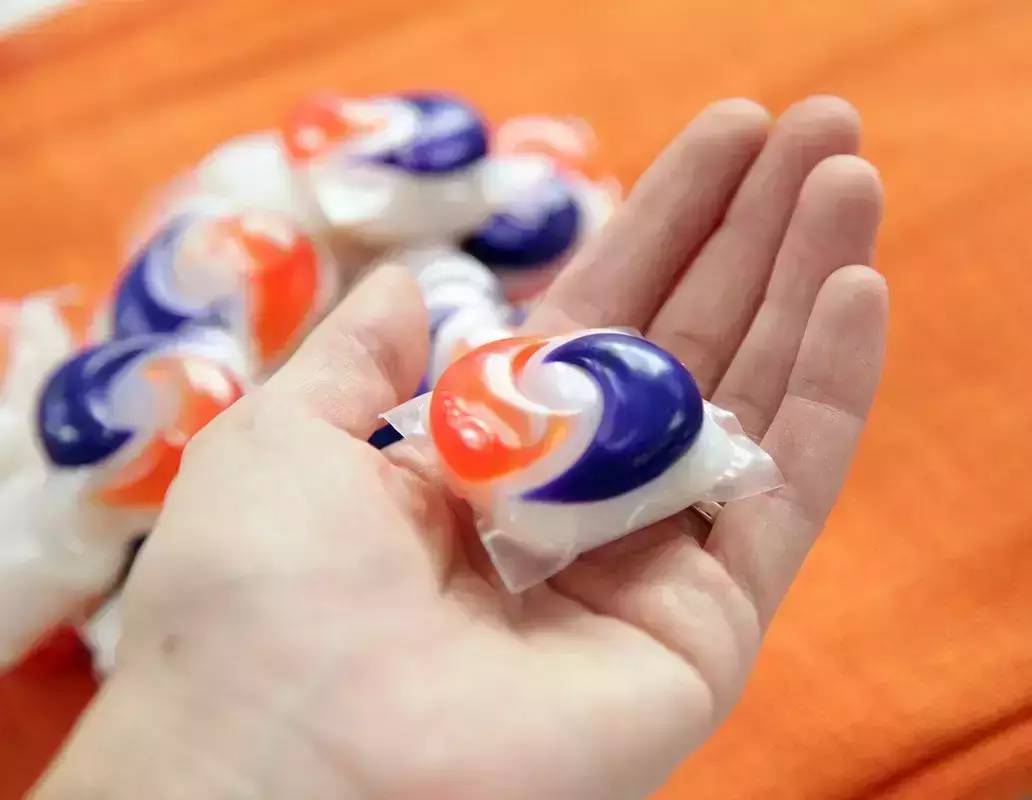
How can plastic dissolve in water?
Plastic is also soluble in water.
Today, let's talk about "dissolving".
our general impression that plastics are not very close to water, let alone dissolve in water, but in fact, this is not absolute. There is a kind of polymer that is also common in life, which can be easily dissolved in water. It is called polyvinyl alcohol ((PVA)).
Let's first take a look at the moving picture:
in the picture, this "plastic bag" is made of polyvinyl alcohol and filled with green food color. we can see very clearly that the plastic bag deforms and dissolves quickly in the water so that the pigment is released.
Why polyvinyl alcohol can be dissolved in water depends on its chemical structure.
here is a structural comparison, with polyvinyl alcohol on the left and polyethylene on the right. Do you see the difference?
the main difference lies in hydroxyl (- OH). In polyvinyl alcohol, each "cell" has a hydroxyl group, which changes the properties of the molecule: the existence of hydroxyl groups makes the molecule more polar (and this becomes more similar to the properties of water molecules). And hydrogen bonds (a strong intermolecular force) can be produced between water and water. In this way, there is a better affinity between these polymer molecules and water molecules. If it is like polypropylene on the right, which only has a long carbon chain and lacks a polar structure, it will be difficult to make an affinity with water molecules and will not be able to dissolve.
generally speaking, solvents and solutes with similar chemical structures are more likely to dissolve, which is the principle of "similar miscibility". Through the modification of the molecular structure, we can also change the hydrophilicity and lipophilicity of a substance, which also plays a lot of role in the design of drugs. For example, fat-soluble drugs are easier to get into the central nervous system, and if we don't want to let it in, we can add some more hydrophilic groups to it. (speaking of which, I have written a serious (nonsense) article to analyze how to let "knowledge" into the brain, actually talking about it if you are interested, you can read [read the original]).
Water dissolves as soon as it comes. What's the use of such plastics? Not to mention, there are many uses.
for example, as I mentioned before, there is a highly concentrated detergent that uses a little Pita Bread Plain, which can dissolve automatically when thrown into the washing machine. This bag is made of polyvinyl alcohol:
in addition, polyvinyl alcohol is also a commonly used material in 3D printing. Sometimes, we want to print out a complex three-dimensional structure with a lot of holes in it, but this structure may lack support in empty places and is difficult to type when printing. At this time, polyvinyl alcohol will be used, and it can also be printed out like the plastic used for 3D printing, but after printing, it can be removed as long as it is soaked and washed in water, and such a complex hollow structure can be made without a problem ~
(of course, this raw material can not be exposed to moisture _ (: damp)
Do you want to buy the funky black and white wedding dresses and show off your body? User-friendly, fun and a great value.
PVA is also used in many other fields, for example, Can be made into glue:
there are many examples of similar miscibilities, such as polystyrene foam that is insoluble in water, which can be "soluble" in acetone. Acetone is a small polar organic solvent, in chemical structure and properties, they are more similar to everyday Bubble plastic (compared to water). However, affected by the degree of cross-linking in polymer molecules, some polymers cannot be completely dissolved even in "temperament" compatible solvents. This is the case with Bubble here. It simply dissolves the long chain of polystyrene, allowing a large amount of air in the styrofoam to escape. However, there is nothing acetone can do where the long chain is cross-linked.
in addition, the fact that volatile oil on orange peel breaks balloons dissolves between rubber and ruler, and condoms are broken by oily lubricants are essentially similar phenomena.
in daily life, you can also properly consider the principle of similar miscibilities, such as marks that cannot be washed out with water. You can try alcohol with less polarity and more lipophilic alcohol or nail polish remover (containing some more lipophilic organic solvents).
Today, I'm so tired, so let's come here first.